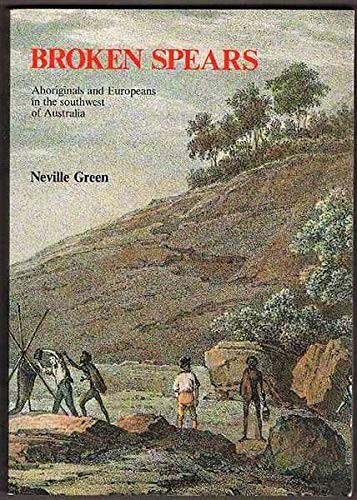WEST AUSTRALIANA ABORIGINAL
Nyungar lifestyle; impact of exploration and settlement on Aborigines 1616-1852; violent conflict, especially the Battle of Pinjarra; treatment by courts and Rottnest Island Aboriginal Prison; use of Aboriginal labour; major epidemics and illnesses; missions; seizure of land. (School of Architecture UWA stamp on prelim, library tag on spine, etc., otherwise fine. Encased in protective covering.)
The world of the Nyungar may appear to have been carefree and idyllic and the country provided adequately for their needs; but their ability to survive depended, as it did in all Aboriginal Australia, on a thorough understanding of the environment and every plant and creature within it. This book gauges the impact that early settlement had on the Nyungar. 210 x 150mm., pp. viii, 238, black & white plates, maps, notes, Appendix (1-3: Record of Aboriginal and Settler Conflict in Western Australia,1826-1852; Aboriginal Conflict in the South West of Australia 1830-1850; Major Epidemics and Illnesses Occurring in Western Australia, 1829-1985) ), index.
SCARCE #1020/240323
Noongar (Australian people) — History. | Aboriginal Australians — Western Australia — History. | Law enforcement – Prisons. | Demography – Population dynamics. | Pinjarup people (W6) (WA SI50-02) | Religions – Christianity – Missionaries. | Race relations – Violent – Massacres, murders, poisonings etc. – To 1900. | Religions – Christianity – Catholic Church. | Nangor people (N1) (NT SD52-11) | Weapons – Spears. | Noongar / Nyungar / Nyungah people (W41) (WA SI50) | Law – Land – State and Territory – Western Australia. | Employment – Labour market. | Health – Infectious diseases. | Settlement and contacts – Explorers. | Religions – Christianity – Anglican Church. | Religions – Christianity – Missions. | Western Australia — History — 1829-1851. | Rottnest Island / Wadjemup (SW WA SH50-14) | Pinjarra (SW WA SI50-02)
